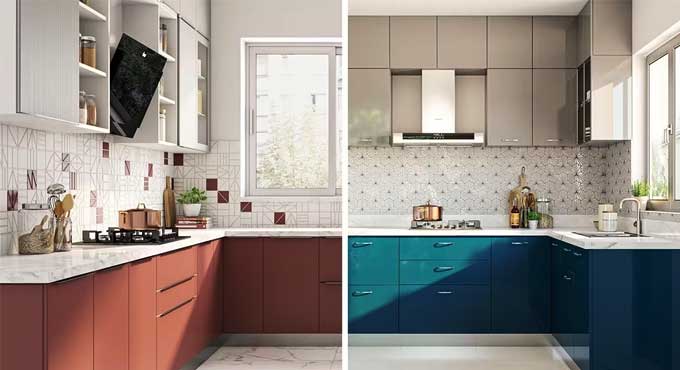
What Is Kitchen Layout: Designing a Functional Culinary Space?

The kitchen is often considered the heart of the home, where family and friends gather, and delicious meals are prepared. Designing a kitchen layout that is both functional and aesthetically pleasing is essential for a well-organized and efficient culinary space.
Understanding Kitchen Layout
A kitchen layout is the arrangement of key elements within the kitchen space. It defines the placement of the stove, sink, refrigerator, countertops, cabinets, and other components, ensuring that the kitchen functions smoothly. A well-thought-out layout not only enhances the cooking experience but also optimizes the use of space.
How to Design a Kitchen Layout?
Designing a kitchen layout requires careful consideration of various factors to create a functional and visually appealing space. Here's a step-by-step guide to help you design the perfect kitchen layout:
1. Define Your Kitchen's Purpose
Determine how you plan to use your kitchen. Is it primarily for cooking, entertaining, or a combination of both? Your kitchen's purpose will influence the layout and design choices.
2. Assess Your Space
Measure the dimensions of your kitchen space, including walls, windows, doors, and any structural constraints. This information is crucial for determining what layout will work best.
3. Work Zones
Divide your kitchen into work zones based on common tasks: cooking, cleaning, food prep, and storage. Ensure that these zones are well-organized and easily accessible.
4. Kitchen Triangle
Designing a kitchen requires an understanding of the work triangle. It involves positioning the stove, sink, and refrigerator in a triangular layout to facilitate efficient movement while cooking. Keep these three elements in close proximity but not too close to avoid crowding.
5. Storage Solutions
Consider your storage needs and the types of cabinets and shelving that will work best for your kitchen. Think about pantry space, utensil drawers, and storage for pots and pans.
6. Appliances
Select your kitchen appliances, including the stove, refrigerator, dishwasher, and any additional appliances like microwaves and ovens. Ensure they fit into your design seamlessly.
7. Countertops
Choose countertops that are durable and complement your kitchen's style. They should provide ample workspace for food preparation and other kitchen activities.
8. Lighting
Pay attention to the lighting in your kitchen. The safety and functionality of a kitchen depend on its well-lit environment. Consider a combination of task lighting, ambient lighting, and accent lighting.
9. Flooring
Material selection should be based on practicality as well as aesthetics. Materials like tile, hardwood, and vinyl are popular choices for kitchen flooring.
10. Style and Aesthetics
Consider the overall style and aesthetics you want to achieve in your kitchen. Whether it's a modern, traditional, rustic, or minimalist design, choose colours, materials, and fixtures that align with your vision.
Types of Kitchen Layouts
Now, let us explore the various types of kitchen layouts, each with its own set of advantages and disadvantages:
1. The Single-Wall Kitchen Layout
Advantages:
A. Ideal for small spaces or studio apartments.
B. Maximizes floor space and minimizes clutter.
C. Provides an efficient workspace for cooking and cleaning.
Disadvantages:
A. Limited counter and storage space.
B. May not accommodate multiple cooks simultaneously.
2. The Galley Kitchen Layout
Advantages:
A. Maximizes efficiency for cooking and cleaning.
B. Provides a well-defined work triangle.
C. Ideal for narrow spaces.
Disadvantages:
A. Limited space for dining or entertaining.
B. Can feel cramped if not well-designed.
3. The L-Shaped Kitchen Layout
Advantages:
A. Offers an efficient work triangle.
B. Provides ample counter and storage space.
C. Accommodates a small dining area.
Disadvantages:
A. Requires a certain amount of space.
B. May not be suitable for open-plan layouts.
4. The U-Shaped Kitchen Layout
Advantages:
A. Maximizes storage and counter space.
B. Offers a well-defined work triangle.
C. Suitable for larger kitchen areas.
Disadvantages:
A. Can feel closed off in smaller spaces.
B. May require additional lighting to avoid shadows.
5. The Island Kitchen Layout
Advantages:
A. Creates a focal point and additional workspace.
B. Ideal for open-plan designs and entertaining.
C. Offers additional storage options.
Disadvantages:
A. Requires a spacious kitchen area.
B. Can disrupt the work triangle if not well-placed.
6. The Peninsula Kitchen Layout
Advantages:
A. Provides additional workspace and seating.
B. Ideal for open-plan designs.
C. Can be a transition between the kitchen and living areas.
Disadvantages:
A. May require additional space.
B. Careful planning is needed to maintain a functional work triangle.
To learn more, watch the following video tutorial.
Video Source: Kitchinsider
7. The Open Kitchen Layout
Advantages:
A. Creates a spacious and inviting atmosphere.
B. Ideal for entertaining and socializing.
C. Allows for flexibility in design and decor.
Disadvantages:
A. Can lead to cooking odours and noise spreading throughout the home.
B. Requires diligent maintenance to keep the kitchen looking tidy.
Conclusion
Designing a kitchen layout is a crucial step in creating a functional and beautiful culinary space. By understanding your kitchen's purpose, considering the available space, and carefully planning work zones, storage, and aesthetics, you can create a kitchen that suits your needs and style.
Each type of kitchen layout has its own set of advantages and disadvantages, and the choice should be based on your specific requirements, available space, and personal preferences. A well-designed kitchen layout transforms your cooking space into the heart of your home, whether you choose a galley kitchen for efficiency, an island kitchen for openness, or an open plan for versatility.


